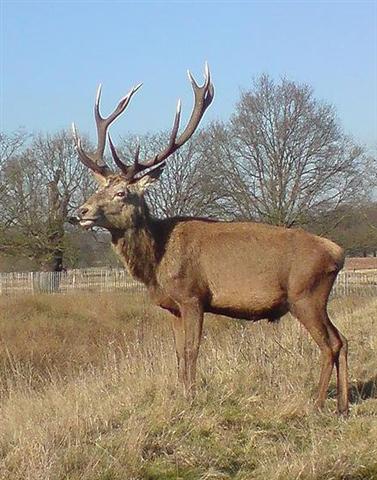3. The Egyptian sphere of Petosiris had a Deer to the north of Pisces. This statement of La Lande rings true, because we have seen the evident similarities between the round Dendera zodiac and the Babylonian reconstruction, in which there indeed is a stag at this time of the year:
There is no sign of W in Cassiopeia in the Babylonian zodiac. But maybe we can see V.
The antlers were used when the Stag stole the fire and brought it to mankind, and this ought to have been when Spring Sun returned. Similar things should be born together. Close to the Stag there is a Rainbow. But the only mammal who lived on Easter Island was the rat. And, furthermore, he must be positioned around autumn equinox instead of when Sun returned. It therefore ought to have been a black rat (kiore uri). However, in my chapter Te Kioe Uri I have suggested the Black Rat was located in spring and among several arguments I used one was the name of the supreme god Io: ... Io dwelt within the breathing-space of immensity. // The universe was in darkness, with water everywhere. // There was no glimmer of dawn, no clearness, no light. And he began by saying these words, That he might cease remaining inactive: 'Darkness, become a light-possessing darkness.' And at once a light appeared. He then repeated these self-same words in this manner, That he might cease remaining inactive: 'Light, become a darkness-possessing light.' And again an intense darkness supervened. Then a third time He spake, saying: 'Let there be one darkness above. Let there be one darkness below. Let there be a darkness unto Tupua. Let there be a darkness unto Tawhito. A dominion of light. A bright light.' And now a great light prevailed. Io then looked to the waters which compassed him about, and spake a fourth time, saying: 'Ye waters of Tai kama, be ye separate. Heaven be formed.' Then the sky became suspended. 'Bring forth thou Te Tupua horo nuku.' And at once the moving earth lay stretched abroad ... The question is not resolved. Nuku probably refers to autumn and tupu means to sprout:
Maybe the 'earth' (nuku) which comes forth is the Pegasus Square and it will rise heliacally in autumn. The kuhane of Hau Maka moved from the southwestern corner of Easter Island and along its dark side - it ought to refer to the time after Spring Sun had left. I think this is the correct interpretation. If Schedir (α) is meant to represent the mammal who north of the equator brings Spring Sun, then it should on Easter Island have been represented by a mammal who brought darkness, presumably by Te Kioe Uri. But the kuhane moved withershins along the southern coast and her station Te Kioe Uri would then become the place where light returned instead of where it left - the light of Moon increases in importance when the light of Sun decreases. Tagata at left in Gb7-7 is not of the great sort (e.g. in Ga4-1) which probably represents Sun - cfr at The Big Man - it is of the kind which could represent the end of a Moon cycle:
|
|||||||||||||||||||||||||||||||||||||||||||||||


